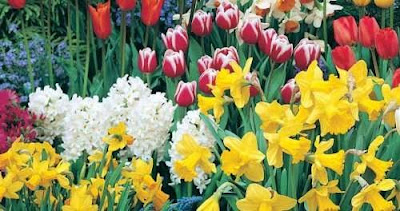If you are like many gardeners, you have visions of beautiful spring bulbs emerging and blooming as the cold winter starts to lessen its hold. You relish the sight of dainty snowdrops, purple crocus, yellow daffodils, pink hyacinths and multi-colored tulips - a sure sign that spring is on the way. You probably bought dozens of dozens of bulbs this fall with visions of gorgeous blossoms for this spring. But like many gardeners, your visions may have been greater than your time and energy to plant the bulbs.
The first thing you need to do is check over your bulbs to make sure they are still healthy. You don’t want them to be soft or show any signs of damage. Just as with fall planting, you want to make sure your bulbs are firm and healthy.So here you are at the beginning of a New Year with dozens of unplanted spring bulbs and you have many regrets about not getting those expense bulbs into the ground. Is it too late to think about planting these bulbs? Not really – as long as the ground is not frozen and you are able to work the soil, then it is not too late to plant these precious bulbs.
Next is preparing the planting beds. Most bulbs are planted in mass for a more visual display when they bloom. Check your bulb packaging for the appropriate planting depths, but a good rule of thumb is as follows: 5 inches for smaller bulbs like allium, crocus and grape hyacinths; 8 inches for medium bulbs like daffodils; and 12 inches for larger bulbs like tulips.
Pick a warm day in between cold spells and dig your bed to the appropriate depth. Loosen the soil in the bottom of the bed and work in some Bulb Booster or another 8-8-8 fertilizer. Space the bulbs in the bed according to the suggestions on the package. Mix the soil removed from the hole with about half organic matter – like compost – and replace half of it over the bulbs. Water the bulbs thoroughly and then add the remaining soil. Water again and then mulch the entire bed with about 3 inches of shredded leaves, pine straw or other available mulch.
January-planted bulbs will normally bloom later than those planted last fall, but most should flower this year. Even if they do not bloom, they will produce green leaves which will help to nourish the bulb for future years.




No comments:
Post a Comment